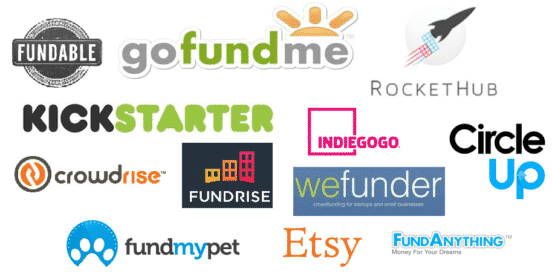Being an artist doesn’t always mean starving. You can have a thriving career in a design firm, big or small, and live a comfortable life. But if you’re like many designers, that doesn’t mean you’re always satisfied. Often, you have a project in mind that gets put on the back-burner. Your dream project doesn’t pay the bills. However, with the advent of crowdfunding, you can get some capital for your project with just a small investment of time and money. Whether you want to create your own graphic novel or want to take a design and put it on a t-shirt, there are plenty of funding options.
What is Crowdfunding?
According to the dictionary, crowdfunding “is the practice of funding a project or venture by raising many small amounts of money from a large number of people, typically via the Internet.” There are many different crowdfunding platforms, but the tend to be very similar in how they function. You set up a page on their site explaining what you intend to do, give the details of your project, outline your funding target and then hit publish. Ideally, people will flock to back your project.
Selecting your target amount is crucial because on most sites, if you fail to reach your goal, you won’t get any funds. However, if you do hit your goal, you will have enough money to fund your dream project. What do the platforms get? A small fee of between four and nine percent of the funds you raised.
Which Platform is the Best for Designers?
There are many great platforms for designers. Each one has its pros and cons. Kickstarter is the largest crowdfunder. Kickstarter is directed mostly toward creative projects, so your graphic novel, posters, book, t-shirt or design idea will do well on the site. Kickstarter doesn’t let you keep the money unless you meet the goal.
There is another model that is also becoming popular: donations. Unlike crowdfunding, which expects to reward contributors with something tangible, donations are just that. People kick in money but not expect a return. Yimby.com is a donation site.
If you are less certain you need a specific goal, Indiegogo might be a viable option. It offers Flexible Funding, which lets you keep some of the money you make, even if you don’t reach your target. You can also sell your funded projects through their website, giving you an easily-accessible marketplace.
How Do You Market Your Project?
The most important aspect of the crowdfunding site is the pitch video. Some people prefer making video pitches, but consumers really like them. It helps them to have a visual of what you are trying to achieve. And just like any other business, you have to sell yourself. Most funding sites let you upload text, photos and videos to tell the story.
The next thing you need to do is attract attention far and wide. Start by asking friends and family to pitch in with their support. They can also help by sharing your page on Facebook, Twitter and other social media programs. Don’t be shy about asking for backers; most people are familiar with crowdfunding and like to be involved in something that the creator is passionate about.












